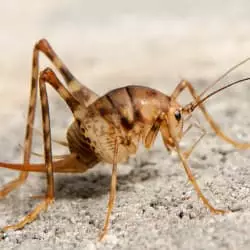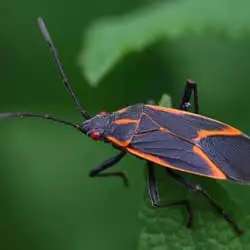Camel crickets. What an interesting name. These interesting little creatures resemble a cross between a cricket, mosquito and a spider. They are also known as “sprickets”, or spider crickets and also cave crickets. They are usually brown in color and have two long back legs, like a cricket, but they also have six other legs that make it so they can be mistaken as a spider. Upon a closer look, their body and torso resemble a stinger-less or mouthless mosquito. With so many different insects on this earth, why are we concerned with these guys?
First of all, they can be very invasive. These small creatures will enter your home through small cracks and crevices and head for your basement. They like dark and damp environments. They feed on almost anything, but usually organic things like:
- Plant decay
- Grass
- Fruit seedling plants
- Fungi (found on your basement walls)
- Other dead insects
While their diet is diverse, their choice of the perfect living environment is specific. You can find them not only in your basement or dark out buildings, but they are also found in other areas such as:
- Shower or laundry areas
- Compost heaps
- Rotten logs, tree stumps or hollow trees
- Under damp leaves, stones or boards.
- Around sewers, gutters and landscaping drainage
These tiny bugs pose no real threat to humans or our pets but they are a nuisance to have around. They will come up from your basement and congregate in the corners of your rooms looking for a meal of spiders or other insects. They are also in search of a quiet, moist and dark place to lay their eggs. Here are a few general tips to help keep them out of your home:
- Repair all cracks and crevices in your basement or crawl space walls
- Be sure to seal around all utility entrances into your home
- Keep shrubbery and trees trimmed back away from the walls of your home
- Routinely ‘air’ out dark and damp places in your home
These crickets are very good at gaining entry into your home. Once you have a camel cricket problem in your home, it is quite difficult to get them out. If you have some living in your home and you can’t seem to rid yourself of them, then it’s certainly time to call the Knoxville pest control professionals. Contact Russell’s Pest Control and get these invasive nuisances out!

